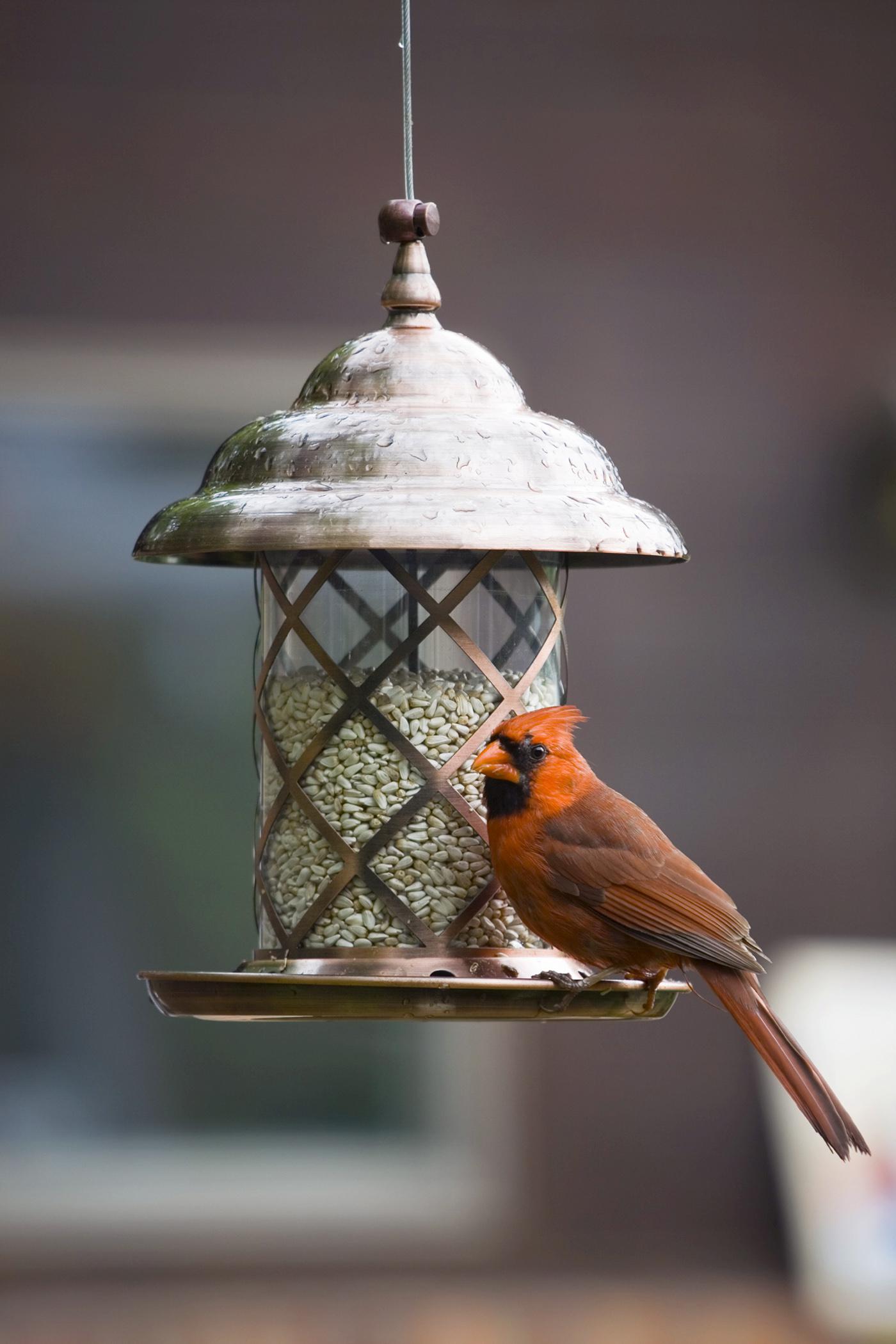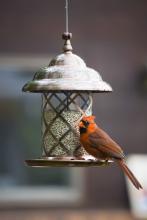Information Possibly Outdated
The information presented on this page was originally released on November 8, 2012. It may not be outdated, but please search our site for more current information. If you plan to quote or reference this information in a publication, please check with the Extension specialist or author before proceeding.
Use good judgment when feeding wildlife
MISSISSIPPI STATE – Warm-hearted Mississippians often turn their attention to their furry and feathered neighbors when temperatures get cold, putting out feeders to care for them over the winter.
Birds are the most commonly fed wildlife, and stores stock a variety of feeders, seed mixes and houses for them.
Leslie Burger, an Extension conservation educator in MSU’s Department of Wildlife, Fisheries and Aquaculture, said bird feeders can provide educational entertainment for people and supplemental food for birds. To maximize the number of visiting birds, Burger said to use different feeds and feeder styles.
“Native sparrows, mourning doves and juncos feed on the ground, and goldfinches and purple finches love tubes of thistle seed,” Burger said. “Cardinals, jays and titmice prefer to be off the ground, and woodpeckers, chickadees and nuthatches like suet feeders placed on the sides of trees.”
Regardless of the type of feeder used, select one that can be cleaned, can withstand the weather and will keep food dry. Avoid tray or platform feeders unless they can be adequately drained so feed does not become wet and spoil.
“If bird feed is to be spread near the ground, use a low tray with drainage to prevent feed from growing harmful molds or bacteria,” she said. “Mississippi law restricts feed from being placed directly on the ground to prevent people from baiting wild animals to a site for the intent of hunting them.”
Nearly everyone who has put out a bird feeder has had to deal with unwanted squirrels visiting the food source. Burger said methods that can deter squirrels include suspending the feeder, mounting it on a pole or using baffles to exclude the rodents. Some of these methods can deter deer as well.
The best places for bird feeder are quiet areas that allow easy access for refilling and good visibility for bird watching. Keep feeders within 3 feet of windows to prevent birds from having high-speed collisions with the glass.
While feeding birds is enjoyable, Burger said birds can generally survive without supplemental feed. However, where birds have become accustomed to reliable food sources, it is best to keep the feeders stocked during periods of severe weather.
“Birds know where to find winter shelter in shrubbery, evergreen trees, brush piles or available bird houses,” she said.
Although feeding birds is accepted behavior, feeding mammals is different. Squirrels and even deer sometimes visit birdfeeders, and their presence is often considered a nuisance.
Bronson Strickland, wildlife ecology and management specialist with the Mississippi State University Extension Service, said many wildlife professionals discourage feeding any wildlife.
“Wildlife should be wild,” he said. “They are not pets, and close contact with wild animals can lead to dangerous situations for humans.”
While squirrels, rabbits or other furry creatures may be cute to look at and fun to feed, Strickland said people assume too much liability when they feed wild animals.
“Feeding wildlife unnaturally concentrates animals, which can lead to disease transmission,” Strickland said. “Feeding wildlife may also lead to unintended consequences like deer spending more time in the neighborhood and having collisions with cars.”
Strickland, who also is an assistant Extension professor in the MSU Department of Wildlife, Fisheries and Aquaculture, said animals actually do not need human help to survive the winter, even in urban areas.
“These animals survive on what is provided them by Mother Nature,” he said.
When people feed wild animals regularly, the animals often come to depend on humans, and this is not a good thing.
“Dependency on man is dangerous for several reasons,” he said. “You may cause an increase in the animal population by providing this artificial food source, and then if this feeding is ever stopped, you have animals that can’t sustain themselves naturally.
“This will lead to more invasive animals, such as raccoons getting into trash cans, and the animals may die if these artificial food sources are removed,” he said.




